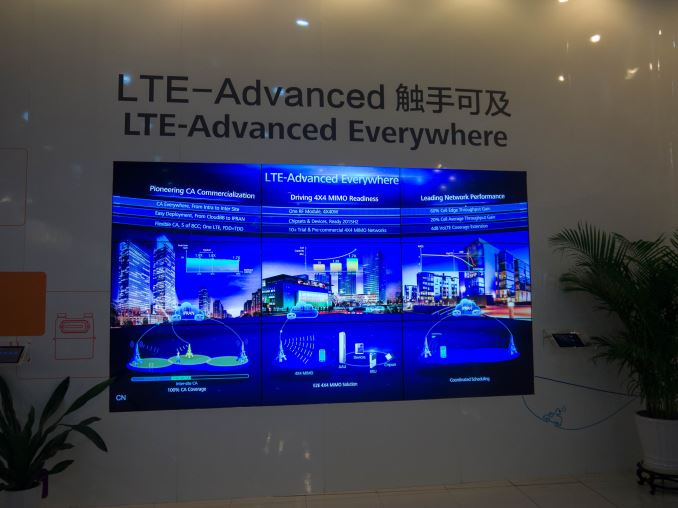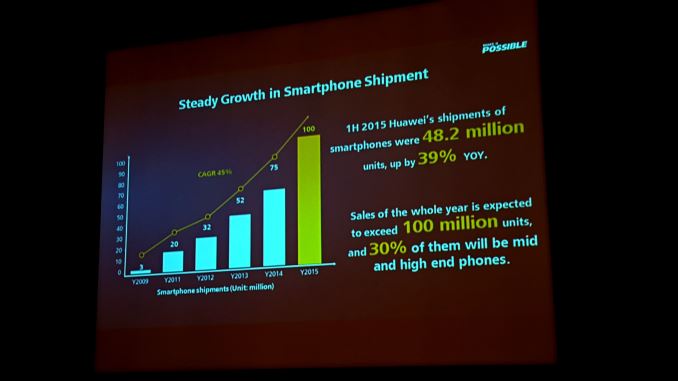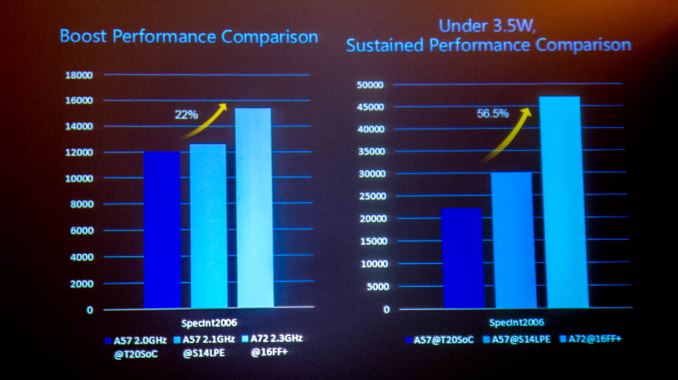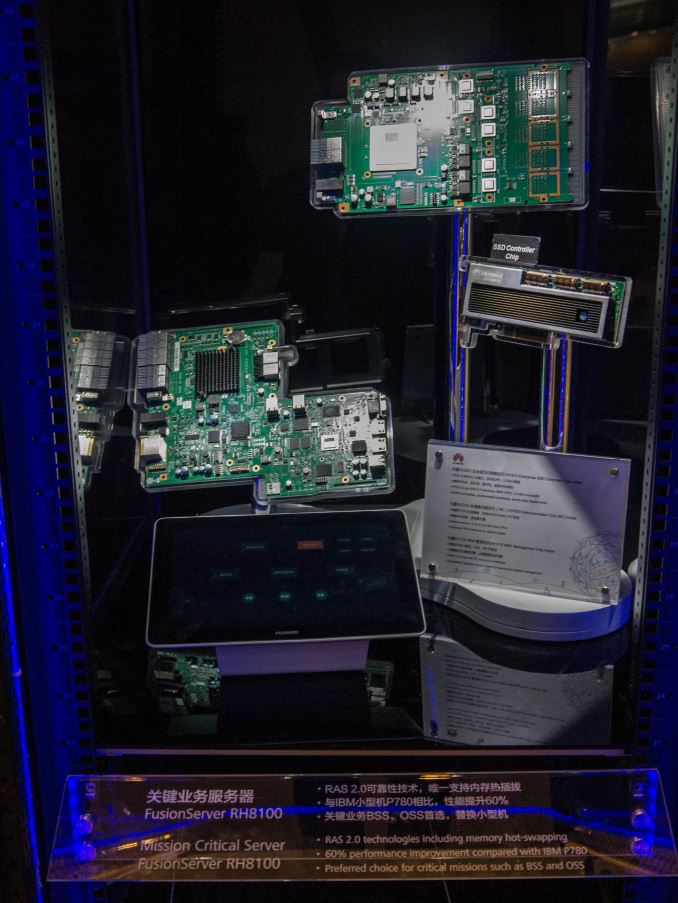China Calling: Huawei’s Media Tour, Kirin 950 and Why We Went
by Ian Cutress on December 4, 2015 8:00 AM ESTFinal Thoughts
All truth be told, when an electronics manufacturer opens up we stand to gain a great deal of insight into how they think and how strategies formulate. Sure, it’s a question of speaking directly to the people that actually make the decisions, otherwise questions and answers never go through the chain. But also as an editor, from my perspective, it is important to understand when you are presented with a standard PR answer and ask the right questions sufficiently in order to get to the heart of what makes a company tick. There will always be things that a company will never tell you, either due to liability or the level of trust they have with you, or there might be some discussions that remain strictly behind closed doors.
As we tell every company we meet, those closed room discussions, despite not directly producing content for us as technical media or analysts, are just as valuable as on-record meetings and can actually be really helpful in understanding perspective or technical details. Even if we do not write about what is said, it enables another layer of conscious or sub-conscious consideration and analysis about the industry for when we write about other topics, helping us translate what we see into the wider picture. Understanding why from a bottom-up perspective is just as important as the top-down, even more-so when looking at trends and directions and being able to educate users and engineers alike.
In that regard, this trip has established a new level of dialogue between Huawei and AnandTech in order for both sides to understand each other more, from our understanding of the markets and devices to their diverse silicon and product portfolio. That rapport and direct line of communication to those who turn the cogs which we did not have before is important, with respect to handsets, silicon, and wider corporate strategy. It is clear that Huawei wants to expand into more markets beyond their standard Chinese base, and has dipped its toe into leading the market with TSMC’s 16nm FinFET+ node in the Kirin 950. The phrase ‘premium brand’ was a common theme throughout our trip, and the numbers back that up. Moving from 3 million handsets in 2009 to 48.6 million in the first six months of 2015 alone means that the investors are all happy, especially given that 30% of those are high-to-mid level devices at a cost of €400 and up. Being partially vertically integrated through its HiSilicon subsidiary allows it to reduce cost, spend on R&D and provide a custom product as long as it is well executed. While this is going on, Huawei’s two other business groups on services and infrastructure account for the other 60% of the company, which are also both benefiting from the HiSilicon synergy.
Huawei does still have several mountains to climb however, this much is obvious. When speaking purely about the handset business, when striving for that premium brand status, its presence in North America is still a way behind the two major players. This stems from several factors including a CDMA licensing and certification issue preventing Kirin chipsets in North American models, but also an issue regarding the perception of some users that will not want to hand over money for a device made by a Chinese-based data company, especially if they cannot pronounce the name. Arguably the first of those issues is easier to crack about CDMA, such that one solution to Kirin might be to produce a die without an integrated modem, similar to Apple, but both of the issues above will have severe implications on Huawei’s ability to expand in the US. The Huawei watch too, as a dip into the wearable space, comes with many variables on style, size, applicability, usefulness, ecosystem, and others – sometimes a single model can be deceptive when users have more unique tastes and perhaps want something more/less than a classic watch design.
For the rest of the world where CDMA isn’t a factor, the latest Kirin 950 chipset needs to be a proven entity and tackle the big players in Apple’s A9, Qualcomm’s upcoming Snapdragon 820, Samsung’s Exynos 8890 as well as other upcoming custom designs. Samsung is the only member in that list with their own fabs, meaning the others will have to pay top dollar for a lead in semiconductor manufacturing. Beyond that the quality of the designs for performance, power efficiency, custom IP blocks and software integration will also be up against back-end production of the silicon itself. It comes across as a fairly daunting task for one of these manufacturers to get all the pieces in place for a new flagship handset every year that builds on the last. In order to be successful they have to execute well in every area every year, to which we’ve already seen some failures and successes.
Both Andrei and I were quietly surprised with the Kirin 950 announcement, and felt positive for the 950 as it offers some interesting innovations (first smartphone A72 cores, first hybrid memory controller, new custom image signal processor, low power i5 sensor hub with compute capabilities in an ARM Cortex M7). It will be interesting to see how much we can decipher about the new chip compared to the old, especially when we have new cores (A53/A57 to A72), a new process node (28nm to 16FF+) , new custom IP and so on. When we get a device into test, teardown and produce numbers, they will tell the story. But as is obvious from our trip that smartphones are just the tip of the iceberg for Huawei.














109 Comments
View All Comments
Communism - Monday, December 7, 2015 - link
Intercepting and identifying those who use TOR is easy, just make sure most of the useful exit nodes are yours and you automatically have all the plaintext transit.After that, you simply have to gain access to all the relevant certificate authorities to man in the middle intercept and decrypt any encrypted traffic by setting up a lookalike site to the one you are impersonating and then simply tell the cisco routers, google routers, microsoft routers, etc. to route the traffic to your site.
When all else fails you can just stuxnet to win. Issue yourself certificates with the microsoft certificate authority and push windows updates directly to their computer and RAT them.
If that fails, you can just push Intel and/or AMD microcode updates directly to their motherboards and run level 0 and level -1 codes with direct access to the UEFI/Trust Chip.
If that fails, you can just directly access their CPU on Ivy Bridge or higher though the on-chip random number generator entropy source that conveniently has a radio antenna (That's how the entropy source produces it's high quality random numbers).
I could go on, but I would guess you get the point.
Communism - Monday, December 7, 2015 - link
code* , not codesMurloc - Saturday, December 5, 2015 - link
even if it's true they wouldn't tell an american journalist anything about it, so it's not even worth asking.You're free to decide on your own whether you trust them or not.
Ryan Smith - Monday, December 7, 2015 - link
"I'm surprised and quite disappointed that you didn't bring up Huawei's (supposedly) close ties to the Chinese military-industrial complex and the PLA."Though it may be an interesting discussion, it's not one we're in an educated position to discuss. Nor really is it my desire for AT to be a political blog.
Meanwhile the comments are fine and I don't see a need to remove them right now. But keep in mind that this is a tech news website, and I'd like to keep the comments focused on tech.
Despoiler - Friday, December 4, 2015 - link
Huawei must not have been too image conscious when they stole and integrated Cisco IP into their products. They even kept lying about it even after they settled.http://blogs.cisco.com/news/huawei-and-ciscos-sour...
Communism - Saturday, December 5, 2015 - link
Why should anyone trust anything that proports to be "justice" that would side with "rounded corners" patents consistently?Where the sole determiner of right and wrong is how many kick-backs and general corruption is present in a tug of war kind of way between the two parties arguing a case in this "justice" framework?
Daniel Egger - Saturday, December 5, 2015 - link
So I guess what you're saying is that everyone got it wrong and Cisco blatantly copied a full operating system from Huawei? Interesting thought but highly unlikely given the fact that Huawei is a Chinese company and their products much younger than Ciscos...s.yu - Saturday, December 5, 2015 - link
It's not even interesting. That guy is highly questionable in his intents.Communism - Saturday, December 5, 2015 - link
Hi operation earnest voice.fanofanand - Friday, December 4, 2015 - link
I am curious to see the size of the back door on these devices, you know the Chinese Government requires it, what makes anyone think the devices sold globally would be any different? I get that the U.S. government, and probably several other governments are no different, but the Chinese government hasn't exactly have a strong record of acknowledging human rights....